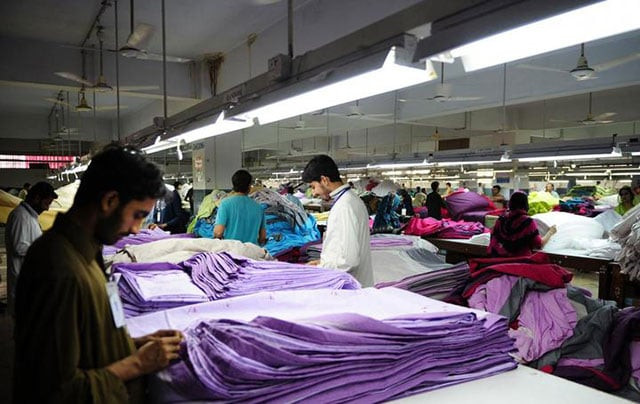Unemployment rate falls during PML-N govt's second year
Survey puts jobless rate at 5.9% in 2014-15 compared to 6% in previous year

PHOTO: ASIF HASSAN
Pakistan’s unemployment rate has slightly gone down while the literacy rate has improved during the second year of the PML-N government, claimed a latest official report.
This creates doubts about the authenticity of critical socio-economic indicators as other official reports show contradictory trends.
Pakistan Bureau of Statistics on Tuesday released the Labour Force Survey for fiscal year 2014-15, claiming that unemployment rate stood at 5.9%, down from 6% in the previous year. It also showed that the national literacy rate improved to 60.7% in the last fiscal year against 60% in 2013-14.
Self-reliance: Rs40b for two million jobless in next three years: CM
Balochistan showed maximum improvement in literacy ratio, followed by Sindh and Khyber-Pakhtunkhwa while the ratio remained almost unchanged in Punjab.
However, the report has raised concerns over credibility and consistency of the official data. In June last year, the National Economic Council, headed by the prime minister, approved the macroeconomic framework that showed that the unemployment rate was 8.3% in 2014-15 - the highest level in the last 13 years.
The last time the unemployment rate was this much high was in fiscal year 2002, when it stood at 8.3%.
Similarly, the Pakistan Social and Living Standards Measurement Survey (PSLM), conducted by the PBS, had showed that in 2013-14 the literacy rate was 58%, down by 2% from the previous year. It had released the survey in May last year. Now in the Labour Force Survey it claimed that the literacy rate in 2013-14 was 60%.
The report also indicates that the official data was compiled by relying on faulty definitions.
To start with, the definition of employee says, “anyone over the age of 10, who worked at least one hour during the reference period and was either paid-employed or self-employed.”
The government also treats a person as employed who is jobless but helping his family member in routine work.
According to the survey, own account worker ratio slightly improved to 36.1% in 2014-15 from 35.4%. The contributing family worker ratio stood at 23.8%, down from 24.4%. If own account workers and contributing family workers are excluded from the employed people, the unemployment rate will rise sharply.
Another reason why the unemployment rate appears misleading is the fact that annual economic growth in 2014-15 was just 4.2%, which was far below the required pace needed to absorb the new entrants in the job market.
Top graduates of leading universities prefer to go abroad to join global firms
According to the survey findings, unemployment in the age groups of 20-24 years, 25-29 years, 30-34 years and 35-39 years significantly increased in 2014-15 compared to the previous year. The 20-24 years age group saw a rapid increase in unemployment compared to the other age groups.
Literacy
The 2013-14 PSLM report had shown that Pakistan could not increase its literacy rate in 2013-14 that dropped instead to 58%.
The devastating floods in 2010, shortage of schools, teachers, student absenteeism and lack of interest at the level of parents, students and teachers - particularly in rural areas - were the reasons behind the increasing illiteracy in 2013-14.
However, according to the labour force survey, the literacy rate jumped from 2013-14 level of 60% to 60.7% in 2014-15. The male and female literacy rates stood at 71.6% and 49.6%, respectively.
The survey is silent on the reasons that were earlier quoted as causes for reduction in the literacy rate in the country.
Under the United Nations Millennium Development Goals (MDGs), Pakistan was required to increase its literacy rate to 88% by 2015.
The provincial literacy rates show that except for Punjab, the other three provincial governments managed to improve literacy ratios. In Punjab, the literacy ratio remained almost unchanged at 61.9% in 2014-15.
In Sindh, the percentage of educated people improved by 1.6% to 63% in 2014-15. In K-P, the literacy rate increased to 54.1% due to increase in female literacy, a progress of about 1%. In Balochistan, the literacy rate increased by 2.5% to 54.3% due to improvement in male and female literacy, according to the report.
Published in The Express Tribune, January 6th, 2016.
Like Business on Facebook, follow @TribuneBiz on Twitter to stay informed and join in the conversation.


















COMMENTS
Comments are moderated and generally will be posted if they are on-topic and not abusive.
For more information, please see our Comments FAQ